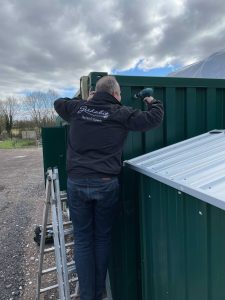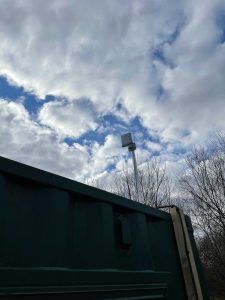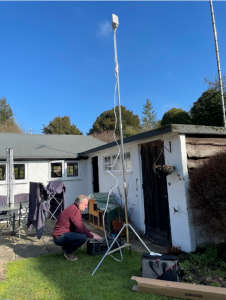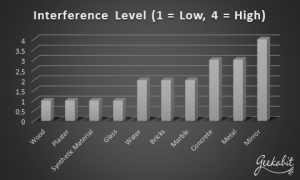Over the last year, we’ve been inundated with requests from people looking for a different and more reliable source of broadband service.
Many people are moving out of London into more rural areas and expecting the same internet connectivity as they would have in urban areas.
They soon realise that many parts of the countryside are suffering from a broadband deficit and there’s a connectivity imbalance across the countryside.
We’ve installed countless numbers of external 4G antennas and routers, effectively replacing the broadband through the telephone cable, with a data SIM card.
This simple solution has meant that people who couldn’t Zoom for work at home now can, children can do their schooling online through Google classroom and Teams, and the dreaded buffering of Netflix binging no longer happens.
Not only is this solution perfect for those at home, but it works excellently for temporary offices too, such as those in construction, archaeology and film and TV work.
We thought we would share a couple of case studies from some recent 4G installations that have seen a hugely positive affect on their connectivity since making the switch.
Case Study – A Rural Home in Bishops Waltham
Wi-Fi Issue: This charming rural home in Bishops Waltham struggled with only 2-3mb download speed and 0.5mb upload speed through their BT Openreach line. As the Director of a large London bank, this unreliable connection meant she couldn’t work from home.
Our 4G Broadband Solution: We installed a 4G antenna and router, and she’s now getting perfect 60mb download speeds with 20mb upload speeds. This means she then didn’t have to travel into London so often.
Case Study – A Garden Landscaping Company in New Alresford
Wi-Fi Issue: This garden landscaping company recently moved their office to a rural location without any internet or traditional phone line. Their new office was a converted shipping container which, as it is made of metal, meant that their phones wouldn’t work quite so well for internet speed.
Our 4G Broadband Solution: Our 4G external antenna solution means they now get 40mb download and 20mb upload speeds within their new office.


Case Study – A Large Metalwork Company in Rural Dorset
Wi-Fi Issue – This metalwork company was having trouble with 3-5mb download speeds and less than 1mb upload speeds. This was the maximum possible speed in their area. Having asked BT Openreach to extend fibre to their premises, they found out it would not only have cost them hundreds of thousands of pounds, but also ruined a beautiful part of the countryside. (If you watch The Crown you may well have seen it!) The poor internet connection meant that contacting their London based clients over Zoom was very difficult, and often required them to do so from their home instead or office.
Our 4G Broadband Solution: Using our 4G router and external antenna, they now receive 70mb download speeds and 30mb upload speeds. This means they can now easily maintain contact with their clients without having to travel back to their homes for a good quality Zoom call. It also means they can employ more people onsite and increase employment in the local community without moving their office to a larger town.
If any of these problems seem familiar to you, whether it’s your home connection or business, perhaps now is the time to get in touch and let us see if we can help.
These 3 examples are just a handful of the successes we’ve seen from clients moving from a slow BT Openreach connection to a faster 4G broadband option.
How can you be sure that 4G broadband is the right option for you?
It’s okay to feel nervous, we understand how frustrating a slow connection can be. We can come and assess your property to see whether a 4G broadband option would be viable for you with our new 4G antenna testing pole. This bit of kit means we can get an accurate representation of how our 4G routers and eternal antennas can solve your broadband connectivity problems.

For more information on our 4G broadband service, head to our website. You can also get in touch with one of our Wi-Fi experts who will be happy to discuss your requirements.
Don’t let a slow BT Openreach connection hold you back. Whether it’s for Zoom calls to keep in touch with colleagues, WhatsApp video calls with friends and family, or nightly Netflix binges – You deserve a connection that doesn’t freeze, buffer or drop. Call in the Wi-Fi Experts today.







